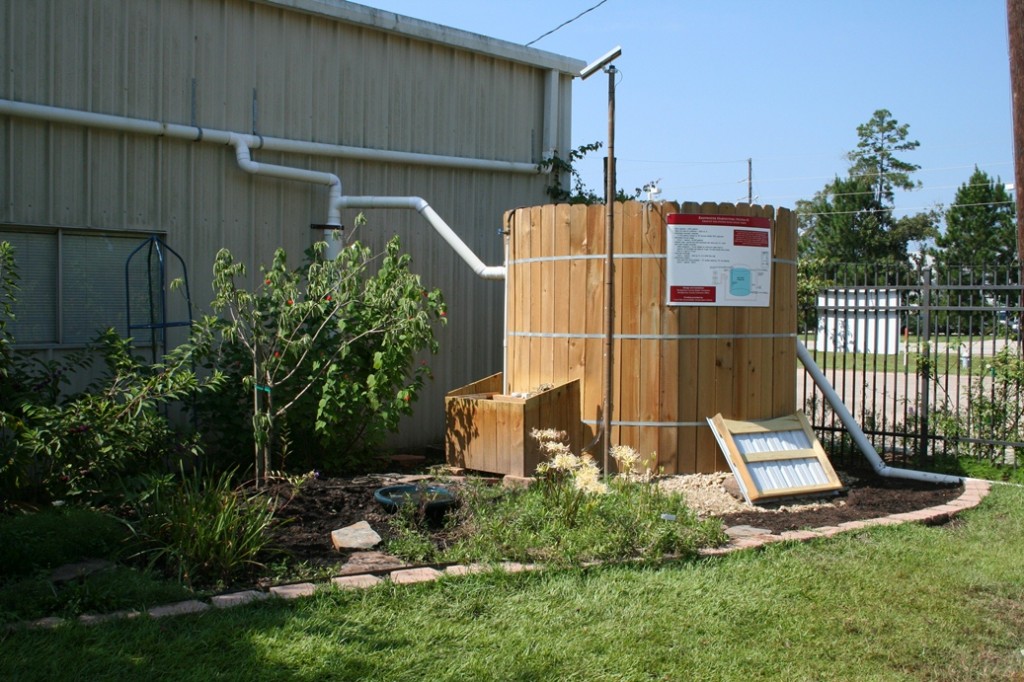Every RWH system is different so if you are deciding whether to install an aboveground versus a belowground tank, there is no single correct answer for everyone. However, here are some comparisons for you to consider that may help you in the decision:
Belowground storage containers cost more than aboveground storage containers because they are expensive to install, maintain, and remove. They also require pumping while aboveground tanks can operate on solely gravity flow. Belowground storage containers are subject to shifting and settling of the soil, which can lead to cracks. These cracks, because they are underground can be very difficult to detect. In addition, a belowground tank is at risk to pollution runoff if the riser (lid) is not properly installed. They are difficult to inspect and clean. Advantages to belowground tanks are that they maintain a consistent water temperature throughout the year, are less visible, and take up less aboveground space (as seen below where the tank is below the driveway of this home).
Aboveground storage containers are less expensive but than belowground tanks, but they are subject to sunlight and other weather conditions (such as freezing) that may affect the system. In addition, they can take up a lot of space in residential or urban situations and may be considered an eyesore to some. However, what is an eyesore to some is a informative demonstration to others. Having an aboveground storage container can be used to educate others on the importance of rainwater harvesting and water conservation (as seen in this demonstration site).